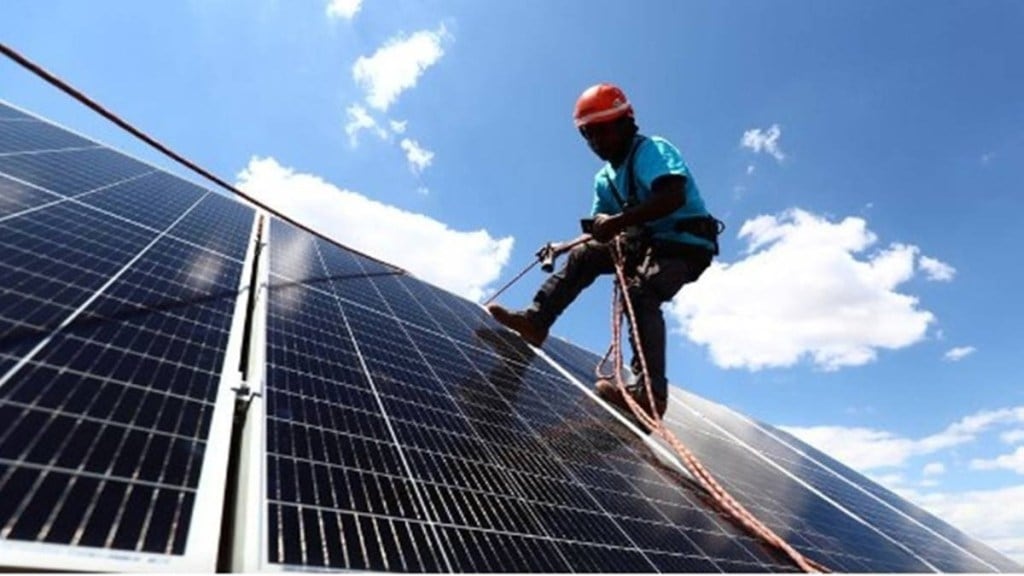Under its flagship programme for rooftop solar PM Suryaghar Muft Bijlee Yojana, the government has facilitated 10.09 lakh rooftop solar connections as of March 10, Pralhad Joshi, Minister of New and Renewable Energy said on Tuesday.
The scheme launched in February 2024 by Prime Minister Narendra Modi aims at installing rooftop solar at 10 million households by 2027 with a total outlay of Rs.75,021 crore. For FY24-25, an allocation of Rs 13,175.33 crore has been made for the scheme.
As of March 10, the scheme has facilitated the installation of over 3 GW of rooftop solar capacity, with an additional 27 GW targeted by March 2027, the government said.
The scheme has received 47.3 lakh applications and 6.13 lakh beneficiaries have successfully received subsidies, amounting to Rs 4,770 crore. So far, 3.10 lakh loan applications have been received, with 1.58 lakh loans sanctioned and 1.28 lakh disbursed, as per the government data. Beneficiaries receive a subsidy of up to Rs 78,000 for up to 3KW rooftop solar system under the scheme.
Chandigarh and Daman & Diu have achieved 100% of their government building rooftop solar targets, while states like Rajasthan, Maharashtra, Gujarat, and Tamil Nadu are also performing exceptionally well, contributing significantly to the overall installation figures, said the government.
India’s renewable energy capacity reached 212.17 GW as of January, according to data from the Central Electricity Authority. Solar power accounts for 100.34 GW.
The country added 25.2 gigawatt (GW) of solar power capacity in the calendar year 2024, significantly higher than 8.3 GW installed in 2023, as per Mercom’s recent report on solar market. The market witnessed record installations last year surpassing annual capacity additions of all previous years.
Rooftop solar installations grew by 86% to 3.2 GW in 2024 against just 1.7 GW in 2023 driven by record residential rooftop solar installations supported by the government’s newly launched PM Suryaghar Muft Bijlee Yojana scheme, Mercom said. Residential consumers accounted for 74% of installations last year, the largest of all.
Gujarat, Maharashtra, and Kerala recorded the highest number of rooftop solar additions in 2024 accounting for 36%, 20%, and 9% of the total capacity additions, as per Mercom’s data. Tenders for rooftop solar capacities issued last year totalled 2.8 GW, up 136% from last year.
The government had earlier highlighted that in India, a major challenge in the deployment of solar power projects is the availability of land. The government has been in discussion with the developers and respective state governments to work out a solution and enable faster deployment of solar power projects, a ministry official had earlier told FE.
The new and renewable energy ministry in an earlier written response to the Parliament had said that it is coordinating with all stakeholders involved such as REC Ltd, discoms, vendors, etc to resolve any challenge for successful implementation of the scheme.
“In between, there was a rainy season, when the momentum became a little less. But the average capacity is still around 3,000-3,500, which we can do on a daily basis,” the ministry has told the Lok Sabha’s Standing Committee earlier. The government intends to cross the target of about 12 lakh installations this fiscal year.
The scheme is expected to generate about one lakh crore units of electricity and with reduction of 72 crore tonnes of CO2 emission.
Under the scheme, Model Solar Villages are also to be set up in which one village would be selected in every district. The village which gets the maximum solarization in a six month period will get a central financial assistance of about Rs 1 crore. “This process has also been started. It has to pick up pace now,” the ministry had told the Standing Committee.

